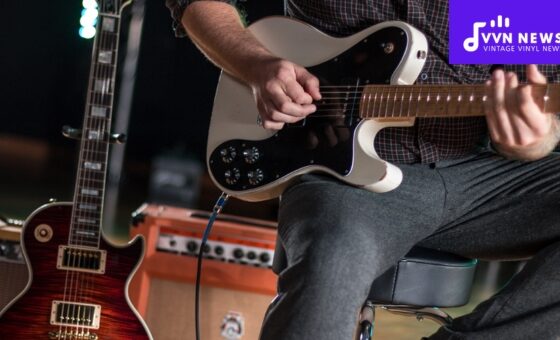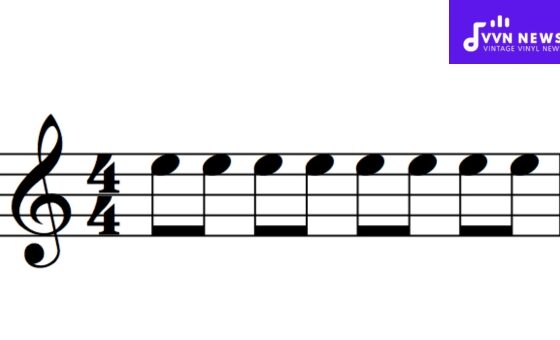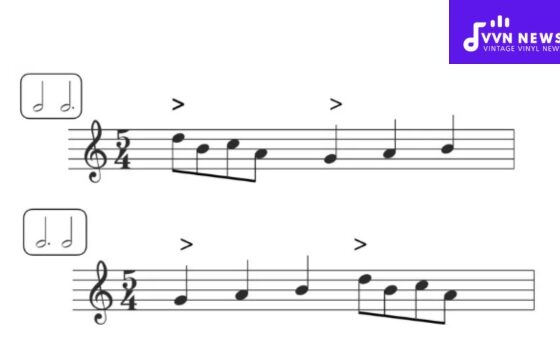As a music enthusiast, I’ve always been captivated and entranced by the sound of an acoustic guitar.
This stringed instrument’s resonance, depth, and versatility can evoke unrivaled emotions from its listeners.
But did you know that not all acoustic guitars are built alike? The acoustic guitars available today have unique characteristics, sound tones, and aesthetic appeal.
Understanding the various types of acoustic guitars can be overwhelming at first glance.
Countless designs, each with its unique history and sonorous qualities, drastically contribute to one’s choice when selecting an acoustic guitar.
Whether you’re an aspiring musician or a seasoned professional looking to expand your collection, gaining knowledge about these diversities can enrich your musical journey on a whole new level.
What is an Acoustic Guitar?
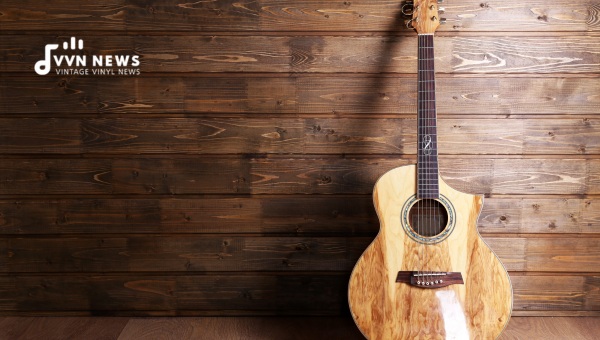
An acoustic guitar is a musical instrument that produces sound through the vibration of its strings. It is typically made of wood and has a body, neck, and a sound hole.
Acoustic guitars do not require additional amplification and produce sound solely through wooden construction.
They are famous for playing various genres of music, such as folk, country, blues, and rock.
The sound produced by an acoustic guitar is made through the strings vibrating over the sound hole, which resonates and amplifies the sound.
Types of Acoustic Guitars
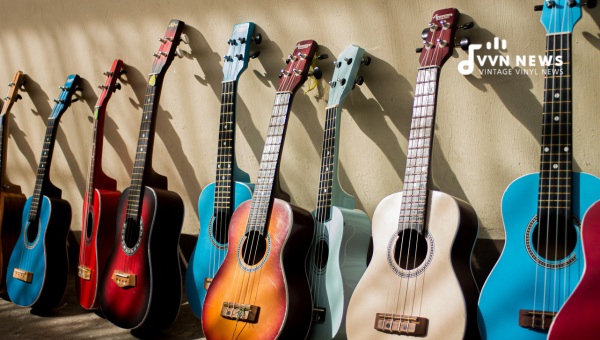
While it’s tempting to categorize all acoustic guitars under one broad umbrella, several unique types can hugely impact their sound, playability, and aesthetics.
Also Read: 25 Best Guitarists Of All Time [String Masters Who Shaped Music]
Classical Guitar
Created in the early 19th century by Antonio de Torres Jurado, the Classical Guitar is characterized by its small body and wide neck (usually boasting a width of over 2 inches).
It generally employs nylon strings, which offer a softer tone than steel strings. As the name suggests, it’s commonly used for classical music and flamenco.
The sound is mellower than other types and requires specific playing techniques that use fingers to pluck the strings rather than a pick.
Classical guitars also incorporate unique internal bracing systems inside the body, contributing significantly to the guitar’s sound.
You’ll often find these guitars with a fan bracing pattern inside, which helps distribute energy from the strings’ vibration across a larger surface area.
Steel-string Acoustic Guitar
A Steel-string Acoustic Guitar offers more projection and volume compared to classical guitars.
This makes it an excellent choice for singer-songwriters or anyone who wants an instrument that they can play with others without amplification.
It comes with steel strings (as indicated by its name) and usually includes either X-bracing or scalloped bracing within their bodies.
The sounds produced range from bright to mellow, conditioned by factors such as string gauges and body size.
These versatile instruments are perfect for nearly every genre, from pop to rock to folk music, cementing their status as favorites among musicians for their RTG (ready-to-go) capabilities.
Acoustic-Electric Guitar
As technology advanced over time, giving birth to electronic amplification in the music world, along came acoustic-electronic guitars -the best of both worlds.
An acoustic electric guitar blends the rawness of an acoustic guitar with the convenience of electric outputs.
Unlike typical electrical guitars, Acoustic-Electric has hollow bodies, making them playable even without electronic amplification.
These guitars come with built-in electronics (called pickups) that allow them to be connected to PA systems or amplifiers – ideal for stage performance and studio recording.
It’s essential, however, to remember that not all acoustic-electric guitars are born equal- prices and quality vary significantly among different brands and models based on the quality of the guitar and its electric components.
Dreadnought
The Dreadnought is an iconic acoustic guitar type. Since its introduction by Martin & Co. in the early 20th century, dreadnought guitars have favored bluegrass, country, folk, and rock musicians due to their bold voice.
A dreadnought boasts a larger body size, a unique square bout, and a wider waist than other guitars.
Its dimension contributes to a deeper tone and more excellent sound projection. Typically, these guitars feature 14 frets clear of the body – giving players more accessibility to higher notes on the fretboard.
Regarding tone, dreadnoughts often have a perfect balance between low-end depth and midrange. Thanks to their roomy sound boxes, they can deliver ample volume while maintaining good tonal balance.
Also Read: 15 Richest Guitarists In The World [Rock Stars Making Bank]
Resonator Guitar
Originally designed in the 1920s as a louder alternative for acoustic blues players, Resonator Guitars possess metal cones or “resonators” inside instead of most guitars’ traditional wooden tops.
Resonator guitars can have either round or square necks depending upon playing style (lap-steel-style or conventional).
They produce sound through one or more spun metal cones (resonators) in the body, which are set into motion by the strings’ vibrations.
These guitars offer a distinct metallic twang that separates them from conventional acoustic instruments – making them popular among Blues musicians and slide players searching for something different.
Auditorium
In contrast with bulky dreadnoughts, Auditorium-type guitars, also known as “Orchestra” models, are smaller. Their design is similar but scaled down — providing easier handling without sacrificing a robust tone.
Auditorium guitars also feature unique curves that make them comfortable and result in a look quite distinctive from other styles.
Perhaps their most characteristic trait is their balanced tonal output and pronounced midrange.
Auditorium fans appreciate the excellent balance and volume for fingerpicking while still being able to comfortably strum chords without losing sound quality.
Archtop Guitar
Archtop guitars are a spectacle with their artistically carved bodies and f-holes similar to a violin.
They descend from the lineage of mandolins – sporting an arched top (and often back). This design feature allows for better projection in a band setting.
The top is either carved out of solid wood (higher-end models) or heat-pressed (lower-end models). They can be purely acoustic or come with pickups as semi-acoustic variants.
With their full-bodied yet clear tone, Archtops have found favor within many jazz circles. Their aesthetics are also quite lavish – featuring beautifully crafted scrollwork, binding, and inlays.
Semi-Acoustic Guitar
Derived from the original hollow body design of traditional “acoustic” guitars, Semi-acoustic Guitars, also known as ‘semi-hollow’ guitars, are designed with a solid center wood block inside their bodies.
This inner block not only reduces feedback, which electric guitars tend to experience, but it also adds sustain and helps to shape the guitar’s tone.
Semi-acoustic guitars also come equipped with metal strings and electronic pickups, allowing them to be plugged into an amp for louder volume or distinct tonal effects.
Their design allows them to produce rich and warm tones while maintaining the resonance of electric guitars, making them a favorite among blues and jazz musicians.
Also Read: 20 Best Eq Pedals For Perfect Tone [Shape Your Guitar Sound]
Epiphone DR-100 Acoustic Guitar – Ebony
The Epiphone DR-100 Acoustic Guitar in Ebony is one of the best-selling acoustic guitars available today.
Reflecting Epiphone’s reputation of combining tradition with innovation, this precision-crafted guitar stands out from its competitors through its superior sound quality and playability.
It has a Select Spruce top, Mahogany body, and neck, resulting in its balanced sound properties and deep basses.
The fingerboard utilizes high-grade Rosewood, extending the life span of both fretboard and strings.
Its iconic dreadnought shape is designed for projection and volume, making it ideal for ensemble settings where you must be heard over other instruments.
The guitar’s polished ebony finish lends an air of elegance that belies its affordable price tag.
Easy-to-play nature combined with robust quality build makes this instrument an excellent choice for both beginners exploring their musical journey or professionals who want an economical yet reliable agent within their armory.
Martin LX1 Little Martin Acoustic Guitar
Well-known within guitar circles around the globe is the Martin LX1 Little Martin Acoustic Guitar. Despite being compact (with a 3/4-size body), this instrument delivers a complete and robust tone.
Its scaled-down size is perfect for musicians who frequently travel or beginners with smaller hands.
The top is solid Sitka spruce, known for its clear, balanced tone. The back, sides, and neck are made from Mahogany wood, lending a warm richness to the guitar’s sound.
This guitar also features an FSC-certified Richlite fingerboard and bridge, adding to its sustainability and durability.
Adding to the versatile nature of this guitar is its optional Fishman-less T electronics.
It’s commonly used by names such as Ed Sheeran, who demands an acoustic workhorse that can be used in various settings like writing, recording, or performing live.
Acoustic Bass Guitar
Widely recognized in Jazz music and seen providing the rhythmic backbone within an acoustic ensemble, Acoustic Bass Guitars are deeper-bodied siblings within the acoustic family.
They employ four strings (or sometimes five or six) to produce lower-pitched notes.
Acoustic Bass Guitars contain copper round wound strings instead of nylon strings of classical or steel strings from a typical acoustic guitar, giving them their unique tone and resonance.
They’re essentially designed for those who crave bass-heavy undertones within their compositions.
However, due to their pitch typically being inaudible acoustically, especially when beside louder instruments, it’s common for Acoustic Bass Guitars nowadays to come equipped with pickups and preamps for amplification purposes, making them popular among studio and live performers.
Also Read: 24 Best Chorus Pedals In 2025 [Deliver A Rich & Wide Guitar Sound]
Flamenco Guitar
A Flamenco Guitar is a type of classical guitar originating from Spain’s Andalusian region.
Designed for flamenco music, these guitars are differentiated from classical guitars by their characteristic construction, choice of woods, and sound output.
Typically, flamenco guitars are built lighter and thinner for fast, aggressive playing.
The most distinguishing feature, perhaps, is the use of cypress wood in construction for a brighter, percussive tone as opposed to rosewood used in classical guitars, which gives a more rounded style.
Moreover, flamenco guitars characteristically have a lower action (the gap between strings and fretboard), enabling faster playability but at the risk of buzzing.
A protective tap-plate called ‘golpeador’ is also featured on these instruments to protect their surface from aggressive strumming known as ‘golpes’ practiced in flamenco playing style.
Taylor GS Mini
Moving on to one of the modern classics among acoustic guitars, we come across the Taylor GS Mini.
Launched in 2010 by Taylor Guitars – an esteemed American guitar manufacturer – this beauty has gained massive popularity for its compact size without compromising sound quality.
The GS signifies the Grand Symphony, which marks its body size.
It’s smaller in scale compared to full-sized acoustics, making it an ideal choice for travelers or beginners who might find full-sized instruments uncomfortable initially.
Despite its size, it boasts loud tonal qualities attributed to its solid top -usually Sitka Spruce or Mahogany- and layered back and sides construction.
Cutaway
The term Cutaway refers not to an independent type of guitar but rather a design feature seen commonly across many acoustic guitar types (classical, battleships, etc.).
It’s a section of the guitar body ‘cut-away’ near the neck joining area, allowing more accessible access to upper registers (frets) on the fretboard.
There are primarily two types of cutaways: Venetian and Florentine. While the former has a softer, rounded form, the latter is sharp and pointed.
Functionally, they do the same job, but you might prefer one over another aesthetically.
It’s often a matter of individual choice whether to go for non-cutaway guitars for their arguably purer tone (more wood, more resonance) or cutaway options for their functional benefits and modern appeal.
Also Read: 20 Best Classical Guitars [Top Picks For A Beautiful Sound]
Taylor GS Mini Acoustic Guitar
Let’s delve deeper into our compact powerhouse – the Taylor GS Mini Acoustic Guitar. The smaller 23.5-inch scale length makes it perfect for beginners or younger players yet allows no compromise in sound quality.
It has a solid Sitka spruce top and layered Sapele back and sides, offering a balanced sound with equal tonal emphasis on high, mid, and low ranges.
The ‘GS Mini’ is also available in an acoustic-electric version equipped with Taylor’s renowned ES-B pickup system, offering higher flexibility to plug into amplifiers or PA systems when required.
In terms of playability, too, Taylor guitars, including this one, benefit from innovative design features like bolt-on necks offering lower action and adjustable neck angle, which significantly adds to user comfort and experience.
Tenor Guitar
The Tenor Guitar, a less common but intriguing variant of the acoustic guitar, initially saw its peak popularity during the 1930s and ’40s.
This guitar comes standard with four strings, unlike the traditional six-stringed models of other types, making it comparable to a ukulele in some aspects.
Its tuning, which typically follows the model of a violin CGDA, sets it apart. This unique arrangement allows musicians to experiment with varied tunings and different sound textures – perfect for jazz or folk enthusiasts!
Moreover, its slimmer size compared to six-string types allows a more comfortable grip, especially for younger players.
Fender Acoustasonic Player Telecaster
Jumping into our electric-acoustic hybrids brings us to the Fender Acoustasonic Player Telecaster.
Aesthetically pleasing with its sleek body structure and fearless sound mechanism, this model is a true treasure worth its weight in gold.
Its cutting-edge acoustic engine provides an array of impactful and versatile voices within one guitar. The engineered top, comprising mahogany, gives it immense durability and warm resonance.
This acoustic-electric hybrid allows you to plug into an amplifier while retaining the tone’s authentic and essential characteristics.
Furthermore, an impressive addition is its integration of modern technology that bolsters your tonal spectrum – from acoustic rhythm tones to electric leads.
Gibson J-45
Last but certainly not least on our list is Gibson’s best-selling acoustic guitar – the Gibson J-45.
Known as The Workhorse due to how perfectly it fits into almost any music genre, it disappears in your hands when you start playing – thanks to its impressively balanced tone coming from a short-scale neck providing easy playability coupled with warmth your ears will relish.
The sheer quality of materials used, from Sitka spruce top, mahogany back and sides to rosewood fingerboards, all contribute heavily to its well-balanced, total tonal range output – deep lows and crisp highs with the right hint of mids marking the cherry on top.
The J-45’s construction perfectly adheres to Gibson guitars’ time-honored playability and superior sound. Aesthetically, it boasts a vintage sunburst finish, which is both stunning and timeless.
Famed for its beautiful design and being a reliable companion to some of the most excellent musicians in history- from Bob Dylan to Elvis Presley, owning a Gibson J-45 feels like holding onto a piece of music history in your hands.
Understanding these different guitar types will give you an edge when walking into your local musical instrument store or browsing options online.
It will help you choose what suits your musical style, playing comfort, budget, and personal aesthetics.
Also Read: 15 Best Electric Guitars Of 2025 [Upgrade Your Riffs With These Picks]
FAQs About Acoustic Guitars
What is the main difference between a classical and a steel-string acoustic guitar?
The primary distinction lies in the string types used. Classical guitars have nylon strings that create mellower tones, while steel-string acoustic guitars use steel strings, producing brighter and more resonant sounds.
Which guitar is best for beginners – classical or acoustic?
For beginners, a classical guitar might be an ideal choice because of its nylon strings, which are easier on the fingers than steel strings.
Why do some guitars have cutaway designs?
Cutaways, the scooped-out section near the neck on some guitars, allow players to reach higher frets on the neck, thereby extending the range of notes they can play.
Are all acoustic-electric guitars also delivering good sound acoustically?
Not all of them. The quality of an acoustic-electric guitar’s sound without amplification depends on its built quality and design apart from its electronics.
When should I choose an acoustic electric guitar over a standard acoustic one?
Choose an acoustic-electric if you perform regularly in large spaces or record music frequently. They provide ease of amplification without losing significant acoustic characteristics.
Conclusion
Exploring the vast landscape of acoustic guitars can be a thrilling experience.
Each guitar type offers a distinctive sonic palette and appeal, from the classical nylon-stringed guitars to the musically versatile steel strings and exciting acoustic electrics.
Whether you’re starting your journey with these stringed marvels or seeking to diversify your existing collection, understanding these diverse types can elevate your musical adventures.
So don’t just strum those strings; embrace the story that each guitar wishes to tell. Happy playing!



